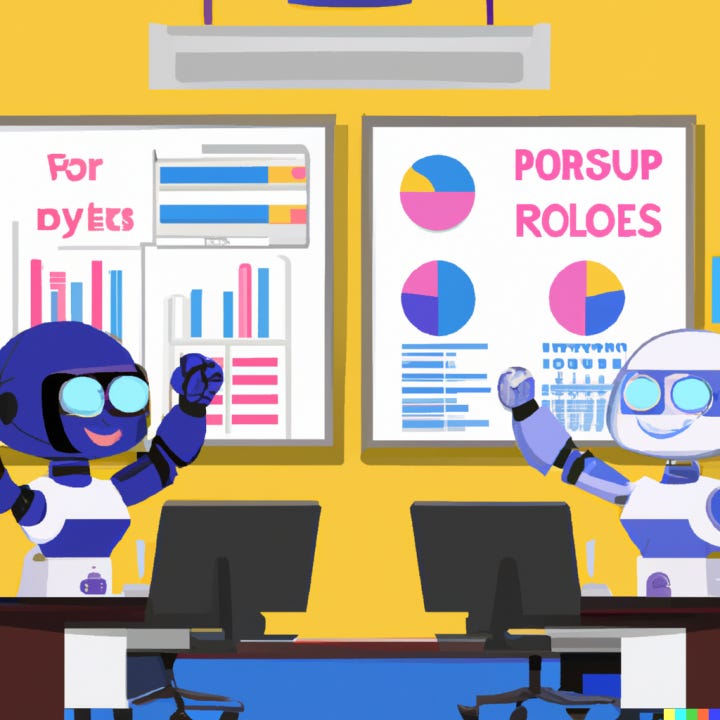Software products are more like children than equipment
You need to develop them over the long term!
What if we treated software development more like nurturing a child into adulthood than installing a set piece of machinery? As someone deeply embedded in technology and data analytics, I've seen firsthand how the Agile methodology shifts the narrative in a compelling way.
Traditional Views: The Machinery Metaphor
Software development often is treated like installing machinery. Teams do research, get requirements from business partners, build the "machine", and install it. Sounds simple, right? Anyone in tech knows it’s anything but. This machinery mindset locks us into fixed specifications, leads to longer development cycles, and often produces a "final" product that is obsolete by the time it's implemented.
Even when we finally install a product that everyone loves, business and finance leaders want to amortize the software similar to machinery, inhibiting continuous development and often leading to antiquated systems that need to be replaced.
The Agile Way: A Parental Perspective
Software products, though, have a lifecycle...developing them is actually more similar to nurturing a child. As parents or caregivers, our objective is to provide the right environment for growth. We feed, educate, and look after a child, and we adapt our approaches based on individual needs and external influences. In the same vein, Agile principles encourage iterative development, regular check-ins, and the ability to adapt and evolve.
When teams set out to build a product, there should be a reasonable expectation that the product will require investment year-over-year to continue improving and maintaining it. Having funding cycles and continuous roadmaps built on end-users, and technology teams', feedback is critical to making sure you don't fall victim to cyberattacks, data breaches, and unpredictable downtime.
Roadmaps are built on strategy but fed by iterative feedback and end-user interactions
© Kuzma 2019 UseResponse
Anna Kuzma wrote a blog in 2019 on 'UseResponse' that captured the need (and desire) for product teams to continuously seek out and process feedback. Much like a parent will get feedback from many different channels over a child's critical developmental years (e.g. doctors, teachers, family members, babysitters...), technology and product teams should build a roadmap for their product that will shape its utility and criticality to an organization.
We see this in our personal lives every day!
How many of you reading this recently had several app updates pushed to your phone? Every time you get an app update, there's a team behind that product that is working through a roadmap of features that are proposed internally and by end-users through the app store feedback channels or in-app data. Companies realize that their apps need to stay up to date in order to protect their users and keep them interested in using the product via new features and functionality.
It's no different in the corporate world. Whether at GE or at Bank of America, I meet people all the time who get very creative to go around software systems that can't provide them the features and functionality that they need. People will find a way to get their jobs done: they have to! But when an organization installed a "super advanced" system 10 years ago, and there weren't any significant investments made to it since, the product isn't keeping up with the pace of change in the world, and that's where the trouble begins.
The Future is Agile and Agile is...agile!
Jamie Dimon, CEO of JPMorgan Chase, recently predicted that people will work 3.5 days a week in the future. The premise of his statement is that AI will continue to write increasingly intelligent code for companies. People will move from telling the computer how to work, to guiding it on its own journey through feedback cycles and requests for new features. We as tech leaders need to become really great at things like Product Management in order to effectively steer that work. Thinking of software as ever-evolving products will not only help us focus, but it will keep us moving forward with ever-powerful capabilities that empower end-users to make faster, more informed decisions.
What should you do NOW?
Ask yourself these questions...if the answer is, "we have not," then reach out to learn more!
How has your company or team adopted product management principles?
How are you using Agile techniques to steer continuous development and delivery of capabilities?
Have you overcome the funding challenges to look at software products on a continuous basis?
Have your business and tech teams built robust roadmaps related to your business processes?
Matt Brooks is a seasoned thought leader and practitioner in data and analytics; culture; product development; and transformation.




